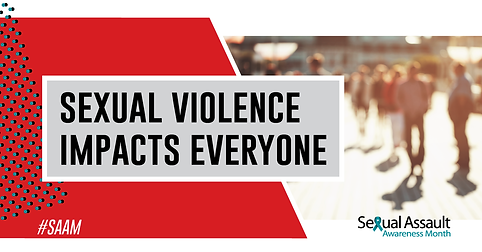April is Sexual Assault Awareness Month

This year's theme is #IAsk. According to the National Sexual Violence Resource Center, 'sexual assault awareness month is a campaign to raise public awareness about sexual violence and educate communities on how to prevent it. The campaign theme, I Ask, champions the message that asking for consent is a healthy, normal, and necessary part of everyday interactions'.
Be sure to check out Decide Diversity's blog on how you can ask for consent at work and beyond!
The #MeToo movement started in 2006 as a way to bring to the forefront how women and girls of color who are from low income communities are victims of sexual assault. In many instances, the women and girls at the intersection of sexual violence, gender, race, and low income are invisible and forgotten about.
The #MeToo movement brought resources and various pathways towards healing for many survivors who might not have access to these resources otherwise. Founder of the #MeToo movement, Tarana Burke, wrote a moving article about the reason she started this cultural phenomenon and its rise in awareness and popularity.

AT THE INTERSECTION OF: Statistics
-
Among developmentally disabled adults, up to 83% of females and 32% of males are victims of sexual violence
-
64% of trans people who will experience sexual assault in their lifetimes
-
For more statistics visit the National Sexual Violence Resource Center and the #MeToo Movement website.
April is a good time for your organization to review the sexual harassment protocols, conduct training, and update relevant policies. Your sexual harassment policy should contain the following:
1. The definition of sexual harassment
2. A zero tolerance for sexual harassment
3. Outline of disciplinary actions
4. Directions for filing a complaint
5. Steps that are taken after a complaint
6. Outline of disciplinary actions
7. Clear 'no retaliation' and 'confidentiality' statement
Ensure your sexual harassment training includes a section on power and privilege. Those in power are in a position to pose quid pro quo offers, such as 'perform this sexual act and you'll get the promotion you've been asking for'.
Need resources for raising awareness in your organization? Visit the National Sexual Violence Resource Center for toolkits, guides, and posters for use in your organization.
Be sure to follow Decide Diversity on Facebook and LinkedIn to get resources and tips all month long!
AT THE INTERSECTION OF:
Sexual Violence, Gender, Race, and Income
-
1 in 3 women experience sexual assault in their lifetime
-
60% of Black girls experience sexual abuse by the age of 18
-
American Indians are the victims of rape and sexual assault at a rate that is 3.5 times higher than that of any other race in the United States.
-
Eight percent of rapes occur while the victim is at work
AT THE INTERSECTION OF: Resources and Tips
History of Sexual Assault Awareness Month
Did you know that Sexual Assault Awareness Month has roots in intersectionality? It's official start began in 2001, but activists in the Civil Rights Movement brought attention to sexual violence women (particularly women of color) experience. The first rape crisis center was established in 1971 in San Francisco; the Violence Against Women Act was passed in 1993; and now the #MeToo movement has propelled to the forefront conversations regarding sexual violence. To learn more about Sexual Assault Awareness Month, visit the National Sexual Violence Resource Center!
